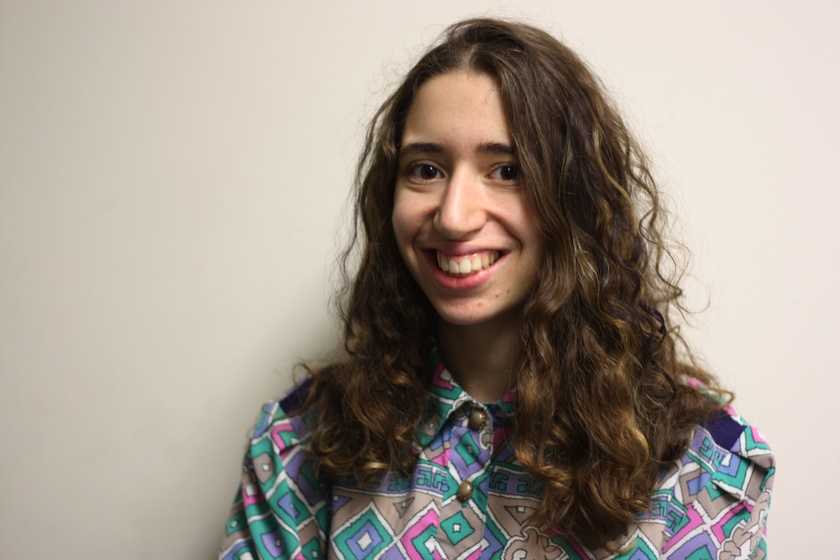There are only a few things, less than I imagined there would be, from my pre-college years that remain present in my thoughts. I have lost interest in the chaos of my city, Istanbul, in the “mosaic” of its culture, in the nebulous (substitute: sketchy) politics of my country. Only a few characters from my past follow me around Harvard Yard as I pace from the two opposite edges (and intellectual spheres) of the campus, from Northwest Labs to Emerson Hall.
As it happens, I am not on a phone call basis with some of these characters that remain relevant to my life. In fact, I have not had more than a single real conversation with them. I employ a practice uncommon on our campus, uncommon in our day, by imagining conversations with these characters that span minutes and run through a complex set of arguments. I find that these imaginary conversations are sometimes more productive than real dialogues, which so often fall victim to insecurities, miscommunication, or unmatched commitment.
One of my “friends” from home I try to keep in touch with during these walks is our neighborhood madman. I named him after Pyrrho durring my junior year of high school after the loopy Greek skeptic. The man, who paced up and down my neighborhood on its main street, running vertical to the Bosphorus, the main axis of the city towards which everything flowed, held a white rope loosely in his hand and waved it back and forth all day. Whenever I spotted my Pyrrho, Pyrrho of Istanbul, I would retreat to a safe gazing spot and watch him as he made his way up or down the hill. It is said that the ancient Pyrrho’s disciples made sure he didn’t doubt the existence of a cliff in front of him, but in 21st century Istanbul, he didn’t seem to have a popular follower base. In between flowerpots on ground floor window sills, you could see the colorful frames of glasses belonging to the gossip ladies of the neighborhood. But they weren’t gripped by Pyrrho or his esoteric ways. His story must have been too boring to endure in their collection. As the thin white rope flagellated the air, I would badger my nanny about talking to him. She would shrug me off—“Ay, my child, don’t talk with the mad.”
This apparent principle was not at all obvious to me—in addition to some other fundamental tenets, which people seemed to take for granted. For example: dreams are not real. As a child, I had recurring dreams, which I held to be memories belonging to even younger ages. I interrogated my mom constantly:
“Mom, do you remember that day we were in grandma’s house, and you brought all those different kinds of cheese, and I liked one.”
“Ege, you don’t like cheese.”
“I know, Mom, but there is this one kind that is only sold in a village near where grandma lives where they make…”
“Are you sure this wasn’t a dream?”
She was right. I wasn’t sure. And I didn’t know how to be sure. Recurring dreams were, and I still think they are, phenomenally indistinguishable from past memories for me. The best explanation, as my mom dictated, was that my memory was created by a dream as opposed to a real experience. My mom’s voice got angrier as I pushed her. I think she assumed the reality vs. dream discrimination came before potty training on the skill timeline, and having passed the latter, I should have attained the artistry of telling what’s real from what’s not.
My first discussion with a madman took place in Warsaw, where I was on an E.U.-funded school trip. At least the Brits, who celebrate David Hume wouldn’t think their money was going to waste as I hold this man accountable for igniting a spark of doubt in me. The scruffy, middle-aged man perched next to me on a wall. “Do you speak English?” he asked, making aggressive eye contact to prevent any dishonesty on my end. There was nothing conspicuous about his madness, but he appeared to be encased in a misty glow.
“Yes, I do. But I’ve learned some Polish, too.”
I asked his name in Polish, but he wasn’t going to let me steer the conversation. “But how do you know you know…”
I didn’t know how I knew, naturally. Middle school kids tend not to think about epistemology.
In the seven thousand 900 and something days that I have been alive, I was right to claim that the sun would rise the next day, but I refuse to kill my inner skeptic. I will not tell you that I know the sun will rise tomorrow. Bring on the Matrix. My answer holds: I don’t know.
Remember peek-a-boo, your favorite game when you hadn’t been indoctrinated into object permanence? Nobody blamed you for being a skeptic then.
I would argue that there is a practical application of skepticism–which constitutes the upside of this omnifarious doubt. Contra the “dysfunctional” or abnormally functional Pyrrho, I offer that practicing skepticism in moderation is actually useful. In my experience, the only way to maintain a sincere relationship with both art and the world is precisely that: not giving up the skeptical position. Because that is how you can give authority to the maker to make. The maker is the poet; the maker is the novelist or the composer. The maker, as you experience the art object, seeps into the workings of your meaning making mechanisms and shifts things around. But he is limited by whatever constraints you impose on him.
Skeptics doubt the existence of the external world, that the sun will rise tomorrow, or that there is anything else in the world but ideas. I think that it is those skeptics who attain a daring relationship with supposedly universal truths and who are comfortable doubting those ideas that we most easily take for granted—it is they who imagine freely. It is they who can participate in fiction.
This is the lesson I learned from Pyrrho before I came to Harvard, and that’s what I think about as I walk through the Yard most of the time. Whatever you believe, doubt it.
Ege Yumusak ‘16 is a Neurobiology concentrator in Leverett House. She wants to live in a city made up of glass bubbles.


